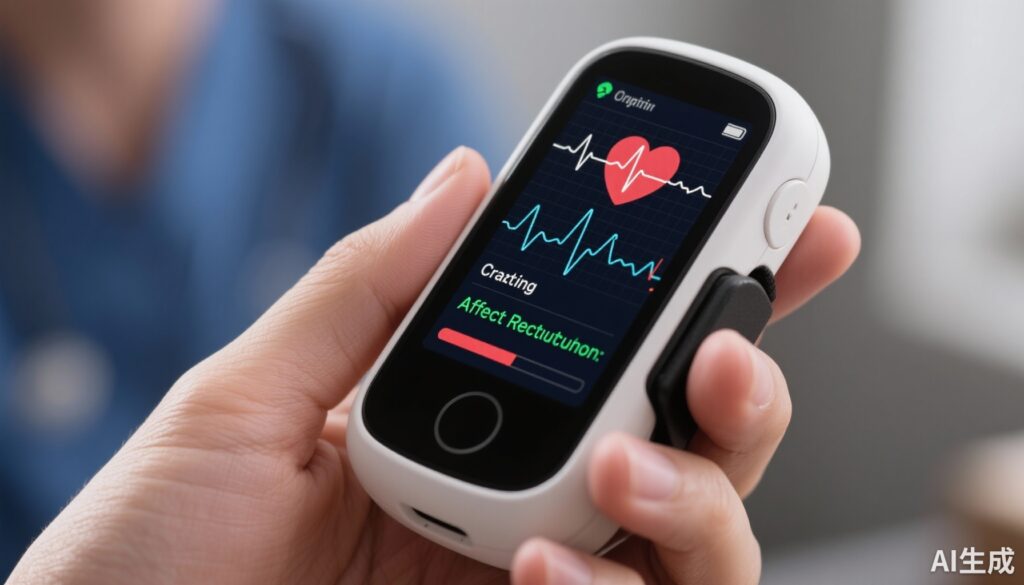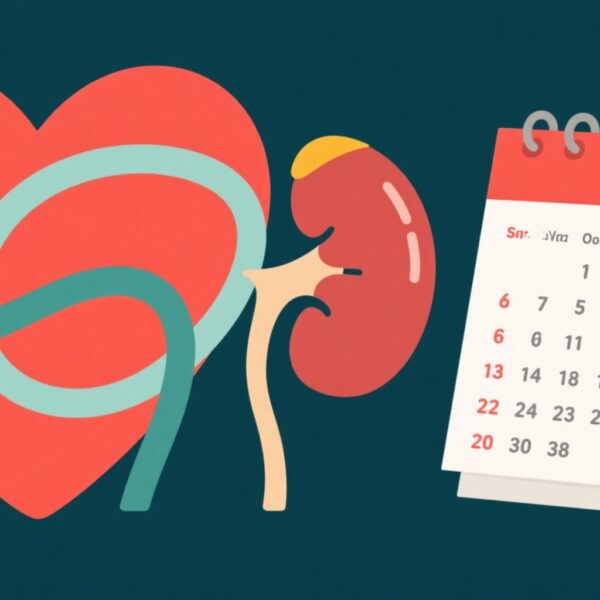Highlights
- Second-generation wearable HRVB reduced negative affect and craving, and lowered alcohol and other drug (AOD) use by 64% compared with usual care in a robust randomized clinical trial of adults with SUD.
- HRVB disrupted the typical craving-AOD use cascade, moderating within-person risk of relapse following craving episodes, indicating a mechanistic pathway for clinical benefit.
- Complementary studies support HRVB’s efficacy in mitigating craving, anxiety, and depression across substance types (e.g., methamphetamine, alcohol) and populations, with additional benefits on autonomic function and sleep quality.
- Limitations include modest sample sizes in prior studies and heterogeneity in intervention duration and technologies; however, the latest phase 2 trial underscores feasibility and impact of second-generation, outpatient HRVB delivered virtually.
Background
Substance use disorder (SUD) remains a global public health challenge characterized by chronic relapsing patterns and a high burden of morbidity and mortality. Craving and negative affect are established proximal triggers of relapse, yet conventional psychosocial and pharmacologic treatments have variable efficacy. Heart rate variability biofeedback (HRVB), a noninvasive intervention leveraging autonomic nervous system modulation through paced breathing and biofeedback, has gained interest for its potential to reduce craving, anxiety, and negative affect. While early studies have suggested HRVB’s therapeutic promise, comprehensive clinical trials assessing its impact on substance use outcomes, particularly using advanced wearable technology, have been lacking.
Key Content
Chronological Development of Evidence for HRVB in SUD
Initial investigations (circa mid-2010s) focused on alcohol-dependent inpatient populations, demonstrating that short-term HRVB training could reduce craving and anxiety, and improve autonomic parameters such as heart rate variability and vasomotor function (NCT DRKS00004618) (Paul et al., Neuropsychiatr Dis Treat, 2015; Jung et al., BMC Psychiatry, 2017). Follow-up studies highlighted a trend toward improved long-term abstinence, though power was limited.
Parallel research extended HRVB applicability to methamphetamine use disorder (Wang et al., Int J Environ Res Public Health, 2022) showing significant craving and dependence severity reductions with HRVB adjunctive treatment in outpatient settings. Additional trials explored HRVB as a modality to enhance sleep quality and mitigate depressive symptoms in this population (Liu et al., J Psychiatr Res, 2023).
Nonrandomized and randomized controlled trials in various SUD populations, including college recovery housing residents (Zucker et al., J Subst Abuse Treat, 2018) and alcohol use disorder in inpatient rehabilitation (Jaidee et al., Psychol Res Behav Manag, 2019), consistently reported decreases in craving and stress metrics, underscoring HRVB’s translational utility.
Second-Generation Wearable HRVB: A Phase 2 Multisite Randomized Clinical Trial (Eddie et al., JAMA Psychiatry, 2025)
This landmark phase 2 clinical trial is the first to assess second-generation wearable HRVB technology’s efficacy in a large, virtually recruited, and racially and gender-diverse outpatient SUD cohort across the US (N=120). Participants were randomized to 8 weeks of HRVB plus treatment-as-usual (TAU) versus TAU only.
Primary ecological momentary assessments revealed statistically significant reductions in negative affect (b = -0.01; P = .001) and craving (b = -0.01; P < .001) among the HRVB group over 8 weeks, contrasting with increases in the control group. No difference emerged in positive affect.
Critically, HRVB was associated with a 64% reduction in AOD use days (OR, 0.36; 95% CrI, 0.25-0.54). The intervention moderated the craving-to-use relationship (OR, 0.84; 95% CrI, 0.73-0.97), indicating HRVB’s possible mechanistic benefit by decoupling craving from subsequent substance use.
Complementary Evidence and Mechanistic Insights
Studies have shown that HRVB enhances parasympathetic activity, improving cardiac autonomic balance and emotional regulation (Lehrer et al., J Altern Complement Med, 2018). Improvements in stress resilience may mediate craving reduction, thereby diminishing relapse risk. Studies in pregnant smokers (Roos et al., Addict Behav, 2024) and patients with fibromyalgia (Gioscia et al., Pain Manag Nurs, 2020) further attest to HRVB’s versatility in stress and symptom management, supporting its broader psychophysiological utility.
Emerging protocols integrating HRVB with adaptive physical activity programs in cancer survivors (NCT03356171) highlight potential synergistic benefits in quality of life and psychological well-being, suggesting possible applications in complex comorbid populations.
Expert Commentary
The recent phase 2 trial by Eddie et al. represents a significant advancement, leveraging second-generation wearable HRVB devices that afford accessibility, real-time feedback, and outpatient implementation, thus enhancing ecological validity. The robust reduction in AOD use days and craving mediated by disrupted craving-use association underscores HRVB’s therapeutic value beyond symptom relief, suggesting modification of relapse pathways.
However, limitations warrant consideration. The durability of intervention effects beyond 8 weeks requires confirmation in longer-term phase 3 trials. Positive affect remained unchanged, indicating HRVB’s effects may be more selective for negative valence states. Blinding and placebo effects remain methodological challenges in HRVB research. Additionally, heterogeneity across substances, severity spectra, and co-occurring psychiatric conditions may moderate responsiveness.
Clinical integration calls for standardized protocols, training, and adherence monitoring. HRVB’s low risk profile, affordability, and feasibility promote its candidacy as an adjunctive tool to existing behavioral and pharmacological treatments. Future research should elucidate biological markers predictive of response and delineate mechanisms linking autonomic regulation with craving modulation.
Conclusion
Heart rate variability biofeedback, particularly through advanced wearable technology, emerges as a promising, noninvasive adjunctive intervention in SUD management. The evidence trajectory from early inpatient studies to the recent robust phase 2 trial confirms HRVB’s capacity to reduce craving, negative affect, and substance use, with mechanistic mediation through disruption of craving-induced relapse pathways.
Pending validation in larger phase 3 trials, HRVB may be poised to enhance personalized recovery strategies, reduce relapse rates, and improve quality of life in individuals with SUD. Multimodal integration, longer follow-up, and mechanistic biomarkers represent key avenues for future investigation.
References
- Eddie D, Nguyen M, Zeng K, Mei S, Emery N. Heart Rate Variability Biofeedback for Substance Use Disorder: A Randomized Clinical Trial. JAMA Psychiatry. 2025 Oct 1. doi:10.1001/jamapsychiatry.2025.2700. PMID: 41032322.
- Wang S, et al. A Pilot Randomized Control Study on Effect Brief Heart Rate Variability Biofeedback as a Complementary Treatment in Men with Methamphetamine Use Disorder. Int J Environ Res Public Health. 2022 Apr 25;19(9):5230. doi:10.3390/ijerph19095230. PMID: 35564623.
- Liu Y, et al. Effects of heart rate variability biofeedback (HRVBFB) on sleep quality and depression among methamphetamine users. J Psychiatr Res. 2023 Jun;162:132-139. doi:10.1016/j.jpsychires.2023.05.029. PMID: 37149922.
- Paul G, et al. Heart rate variability biofeedback in patients with alcohol dependence: a randomized controlled study. Neuropsychiatr Dis Treat. 2015 Oct 9;11:2619-27. doi:10.2147/NDT.S84798. PMID: 26557753.
- Jaidee W, et al. Stress and craving reduction under treatment with heart rate variability biofeedback and the Phramongkutklao model among patients with alcohol use disorder. Psychol Res Behav Manag. 2019 Aug 6;12:619-627. doi:10.2147/PRBM.S199762. PMID: 31496846.
- Lehrer P, Eddie D. Current Evidence on Heart Rate Variability Biofeedback as a Complementary Anticraving Intervention. J Altern Complement Med. 2018 Nov;24(11):1039-1050. doi:10.1089/acm.2018.0019. PMID: 29782180.


